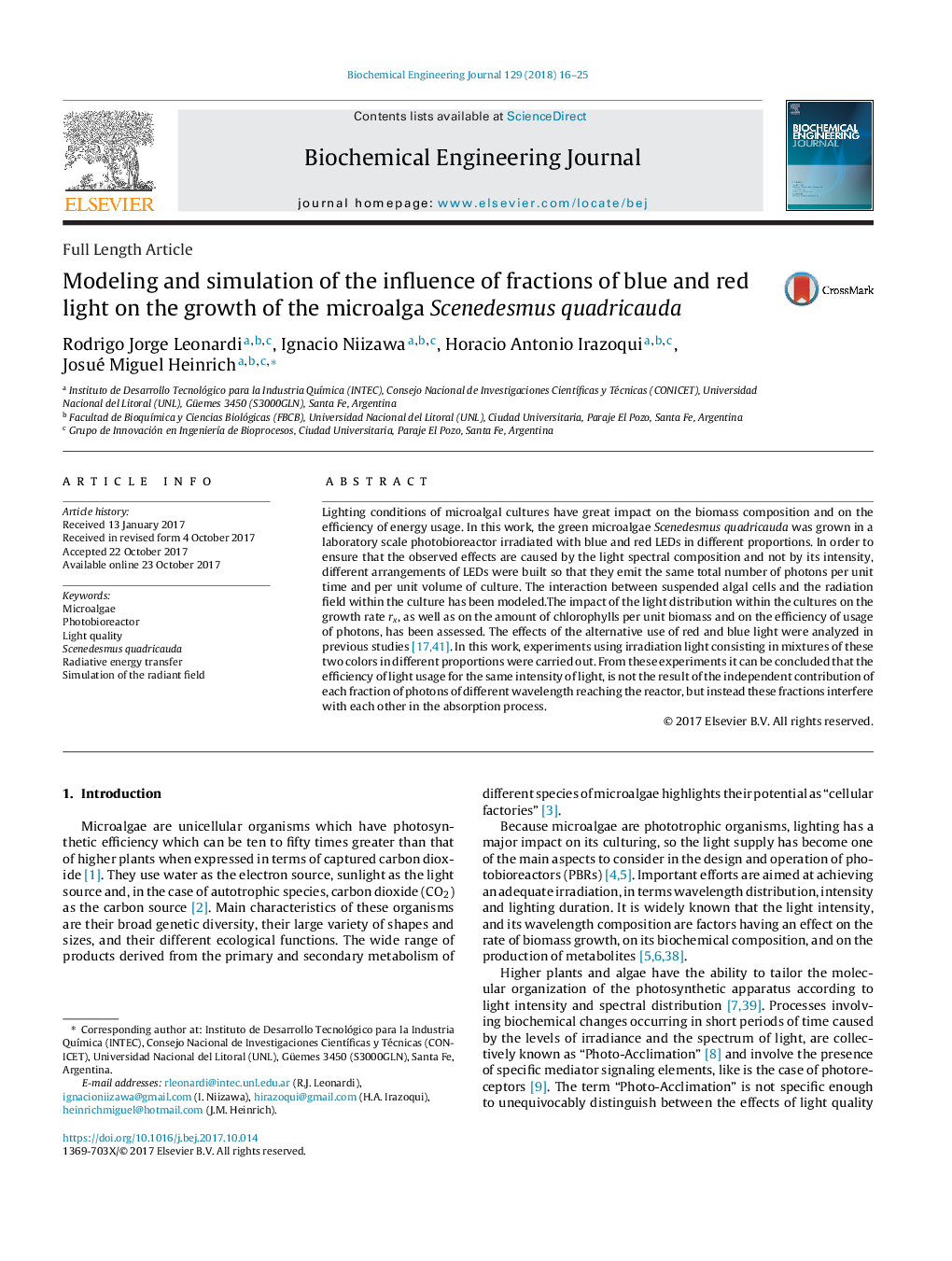| Article ID | Journal | Published Year | Pages | File Type |
|---|---|---|---|---|
| 6482307 | Biochemical Engineering Journal | 2018 | 10 Pages |
Abstract
Lighting conditions of microalgal cultures have great impact on the biomass composition and on the efficiency of energy usage. In this work, the green microalgae Scenedesmus quadricauda was grown in a laboratory scale photobioreactor irradiated with blue and red LEDs in different proportions. In order to ensure that the observed effects are caused by the light spectral composition and not by its intensity, different arrangements of LEDs were built so that they emit the same total number of photons per unit time and per unit volume of culture. The interaction between suspended algal cells and the radiation field within the culture has been modeled.The impact of the light distribution within the cultures on the growth rate rx, as well as on the amount of chlorophylls per unit biomass and on the efficiency of usage of photons, has been assessed. The effects of the alternative use of red and blue light were analyzed in previous studies [17], [41]. In this work, experiments using irradiation light consisting in mixtures of these two colors in different proportions were carried out. From these experiments it can be concluded that the efficiency of light usage for the same intensity of light, is not the result of the independent contribution of each fraction of photons of different wavelength reaching the reactor, but instead these fractions interfere with each other in the absorption process.
Related Topics
Physical Sciences and Engineering
Chemical Engineering
Bioengineering
Authors
Rodrigo Jorge Leonardi, Ignacio Niizawa, Horacio Antonio Irazoqui, Josué Miguel Heinrich,
